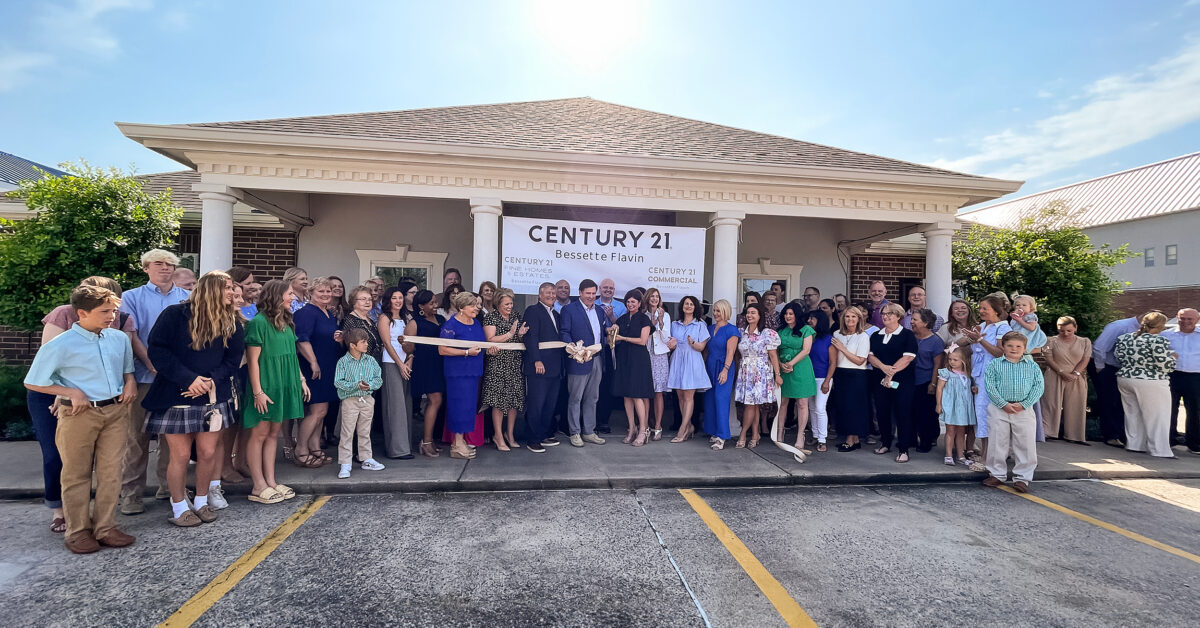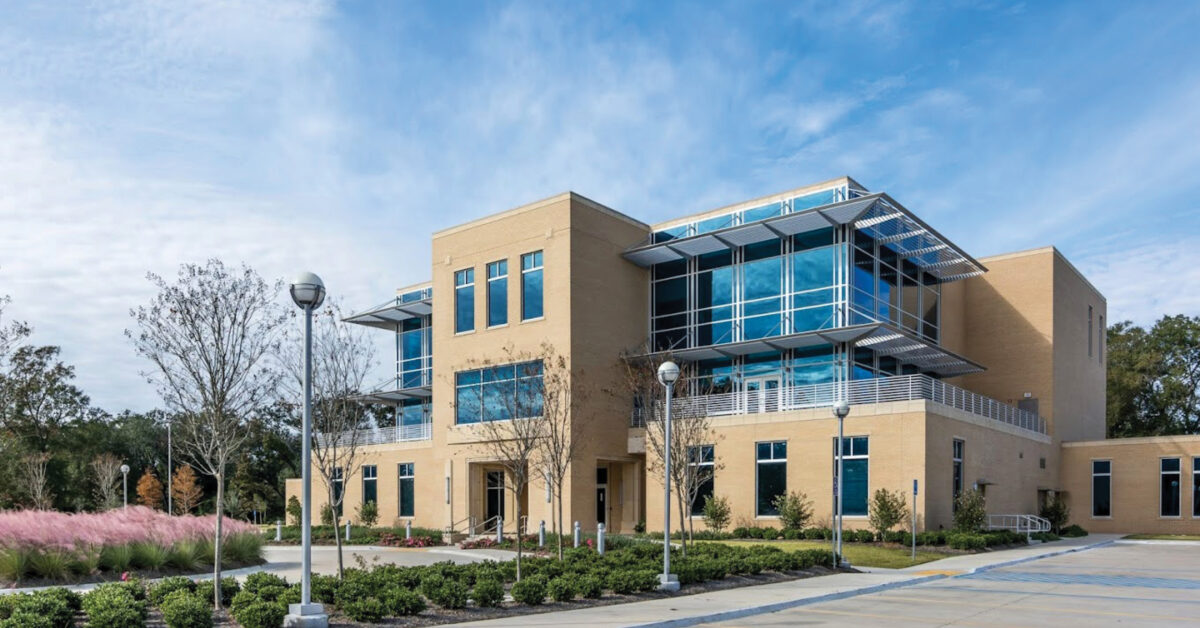
Stock the Bar in SWLA!
March 2022
Stay Safe from Cybersecurity Threats
March 2022Economic Scorecard
Keeping track of the local industries in SWLA/SETX can be almost as exciting and fast paced as following the mania of March Madness! Considering the economic and service contributions these companies make to our community, we enthusiastically cheer then on, as their success is vital to SWLA’s success. This issue’s cover section, called Economic Scorecard, features a micro-sample of local industries who are New to the Game, Back in the Game, Still in the Game, Growing their Game, even Women in the Game!
Growing their Game: Cheniere Energy Exports LNG to The World
Exports LNG to the World
Cheniere’s Sabine Pass liquefaction facility, located in Cameron Parish, Louisiana, first began service in 2008 to import natural gas to the U.S. With abundant U.S. natural gas supplies developed since that time, the facility was changed to send cleaner energy to the rest of the world. By chilling natural gas to approximately -260F, natural gas is liquified and its volume reduced by hundreds of times, making it practical to ship. That product is then called liquefied natural gas or LNG. In 2016, Cheniere began exporting LNG from the Sabine Pass facility. Cheniere also owns and operates a facility in Corpus Christi, Texas that began exporting LNG in 2018. Their headquarters are in Houston, Texas, with offices around the globe.
Natural gas is processed on a line of equipment called a train. Each train can liquefy millions of tonnes of LNG per year for export. Cheniere’s sixth train at the Sabine Pass liquefaction facility was placed in service in February of 2022. This marks the ninth train now in-service across Cheniere’s two facilities.
Natural gas is in demand around the globe. Cheniere has now exported to 37 markets around the world since start-up. Top destinations include South Korea, China, Mexico, Spain and Brazil. As a cleaner fuel, natural gas is replacing coal in electric power plants in many locations. It also serves as a heating and cooking fuel in homes, businesses, schools and hospitals, makes fertilizer to keep food supplies coming to your table and powers transportation. With so many uses and benefits, the demand should remain strong well into the future.
As such, Cheniere is considering opportunities to further expand their facilities. They expect to make a decision on the construction of an expansion project at their Corpus Christi facility this year.
Cheniere stats:
Site: 1000+ acres
Accessibility: 40′ channel depth
Access: ~4 nautical miles from coast
Berths: 2 docks, 3rd dock construction underway
Storage: 5 tanks (17 Bcfe)
Trains operating: 6
In service: since 2016 (as liquefaction)
Personnel: ~950
Growing their Game: Chennault International Airport
Chennault International Airport is an emerging national aerospace hub that has kept military, corporate and personal aircraft in tip-top condition for more than three decades. Much of the industry is already familiar with Chennault and the Lake Charles region, given its first-class tenant partners — including Northrop Grumman, LandLocked Aviation Services and Citadel Completions. In addition to the world-class maintenance, repair and overhaul (MRO) work done for years by its tenant partners, Chennault is also home to non-aerospace manufacturing and service businesses.
Chennault boasts an impressive 10,701-foot-long runway, the longest at any airport between Houston and Cape Canaveral, Florida. It is capable of handling all aircraft flying today and has ample adjacent concrete for parking. Chennault is served by an accredited, contracted air traffic control tower. FBO services are provided by Million Air. Even with all the development at Chennault, there’s still room to grow. There are more than a dozen tracts of land totaling nearly 1,000 acres available for development.
AIRPORT OF THE YEAR
Chennault is Louisiana’s reigning Airport of the Year as judged by the state Department of Transportation and Development. It also earned the designation as the 2021 Southwest Region leader in Louisiana Economic Development’s ranking of top achievements statewide.
“The willingness to change and look for opportunities outside of the norm is critical to remaining relevant in our dynamic world today,” said Chennault Executive Director Kevin Melton. “Chennault remains a game-changer — we continue to work toward new tenant partners, more development and more jobs.”
NEW IN ’22: AIR CARGO
Projects under way at Chennault International Airport are expanding the complex’s profile in serving aerospace and other needs. One effort is the construction of a $4 million, 10,000-square-foot facility that represents Chennault’s entry into the air cargo sector. Construction of the air cargo pass-through facility is its latest initiative to expand and diversify the job-producing business/aerospace complex.
“Chennault offers relief to airlines and freight forwarders who need space and attention as a low-cost alternative to larger markets where expense, ground delays, and airspace delays slow delivery,” said David Whitaker, an advisor for the initiative. The facility is funded by $3 million in state capital outlay funding, with the Chennault International Airport Authority paying the rest. Construction will be completed this summer. A tenant partner is sought for the facility. As the facility is being built, ongoing discussions are planned with potential ground handling partners on such related issues as ramp handling, warehouse operations and securing unique ground equipment to service large aircraft.
MILLIONS MORE IN CONSTRUCTION
Another project at Chennault is a new facility for the Louisiana Department of Wildlife and Fisheries. Also on the horizon is a $24 million, 60,0000-square foot training and readiness committee for the Louisiana National Guard. As these projects get under way, Chennault has completed the widening of the main entrance of the complex by adding signage, lighting and video security to the new four-laned plaza.
Growing their Game: Cameron LNG
Combines Corporate Success with Environmental Preservation & Community Involvement
Cameron LNG is an $11 billion natural gas export liquefaction facility in Hackberry, Louisiana. The three-liquefaction train facility reached full commercial operations in August 2020 and has an export capacity of 12 million tonnes per annum of LNG or approximately 1.7 billion cubic feet per day.
Cameron LNG represents a significant investment in U.S. energy infrastructure that has and continues to provide many benefits – both locally and globally – including jobs, economic growth and increased investment in the community while helping America’s trading partners in Europe and Asia.
The more than 300 Cameron LNG employees help honor the company’s commitment to safeguard the area’s wildlife and marshlands, support the community and work with local businesses and schools to improve the region’s quality of life every day. Cameron LNG has awarded more than $3.3 million in contributions to nonprofit and business organizations benefitting the region.
By beneficially using dredge spoil material since construction of the regasification terminal in 2005 and continuing through the construction of the liquefaction facilities, Cameron LNG has created over 750 acres of marshland to date in Cameron Parish. Annual dredging of the berth area will allow Cameron LNG to continue to create up to 7000 acres of marshland for the life of the project. Additionally, through its annual corporate responsibility investment program, Cameron LNG partners in local efforts to preserve and protect wildlife habitats, restore the coastal beach and wetland areas and support beautification efforts in nearby communities.
The company is in a long-time partnership with the Louisiana Wildlife and Fisheries Foundation to reintroduce the whooping crane at Rockefeller State Wildlife Refuge. The Foundation awarded Cameron LNG with the Whooping Crane Stewardship Award for its financial support of the project.
“Cameron LNG has been a responsible community partner in Southwest Louisiana for more than 17 years when it first began developing the regasification project,” said Stevie Trahan, external affairs manager for Cameron LNG. “We remain committed to investing in the communities where we work and live, and we partner with organizations and leadership that align with our efforts to champion local growth and development and support resilient and safe communities.”
Cameron LNG is committed to producing socially responsible LNG and reducing our carbon emissions footprint. Since commencing commercial operations, Cameron LNG has initiated strategic and operational actions with the goal of continuing to reduce our greenhouse gas (GHG) emissions.
In January 2022, Cameron LNG filed an application with the Federal Energy Regulatory Commission (FERC) seeking a limited amendment to its existing authorization for expansion to the company’s three-train liquefaction export facility. This amendment provides for optimization of one additional liquefaction train (Train 4) with design enhancements that will include the use of electric drive (E-drive) motors to replace gas turbine drives and tie-ins to allow the optionality of carbon sequestration.
“As part of Cameron LNG’s environmental, social, and governance strategy, the company is continually evaluating ways to reduce the environmental impacts of its facility,” said Clayton Miller, environmental manager for Cameron LNG. “Utilizing E-drive technology, instead of gas turbine drives on the new train, will allow for significant reduction in emissions.” Construction of the Amended Expansion Project will occur on property owned and managed by Cameron LNG, and construction is expected to begin in April 2023.
Cameron LNG is jointly owned by Sempra Infrastructure, Total, Mitsui & Co., Ltd., and Japan LNG Investment, LLC, a company jointly owned by Mitsubishi Corporation and Nippon Yusen Kabushiki Kaisha (NYK).
Growing their Game: CITGO Lake Charles Manufacturing Complex
CITGO Lake Charles has been a SWLA industry leader since 1942 when World War II raged across the globe. Early in the war, U.S. military chiefs decided that all military aircraft engines would be built to use 100-octane gasoline. Planes would need to fly farther, faster, and higher than ever before and carry larger and larger payloads. But there was one problem . . . U.S. refineries could not furnish enough fuel to keep our bombers, fighters, and support planes in the air. In March 1942, government officials gave the go-ahead for Cities Service to build a refinery, now known as CITGO Lake Charles Manufacturing Complex, 29 miles up the Calcasieu River from the Gulf of Mexico on Rose Bluff. The plant was built in 1944 to refine crude oil into 100-octane fuel for U.S. bombers.
The Civil Air Patrol began the establishment of a series of coastal patrol bases in 1942, including Coastal Patrol Base No. 9 at Grand Isle, La. to safeguard vital oil tankers and other merchant traffic from marauding German U-boats.
Today, CITGO Lake Charles employs approximately 1,000 full time workers and around 1,000 contractors. While the plant’s original product was primarily jet fuel, it currently produces a wide range of products, predominantly gasoline, diesel and jet fuels. Consumers use these products every day – gasoline for cars, jet fuel for air travel, and diesel fuel used by delivery trucks on their daily routes. Petrochemical products produced at the CITGO plant are also the building blocks for many household items, primarily plastics. This year, CITGO celebrates 78 years in Southwest Louisiana and plans to continue providing energy for generations to come.
Growing their Game: SASOL 2.0
Moves this Company into a More Profitable, Sustainable Future
Sasol surged into 2022 with significant momentum, as it continues to make progress on a company-wide effort to create a more profitable, more sustainable future.
Sasol 2.0, as the initiative is called, relies heavily on the company’s Lake Charles operations to deliver high demand, high margin specialty chemicals to customers around the world. In September 2021, Sasol announced plans to reduce greenhouse gas emissions by 30 percent globally and across its U.S. operations, with the Lake Charles site a key focus.
The challenges
Like many local companies, the COVID-19 pandemic in 2020 created multiple obstacles for Sasol Chemicals and its Lake Charles area employees. But the pandemic also drove down oil demand – and oil prices – which had severe repercussions for the company. Hurricanes Laura and Delta added to the challenges, damaging or destroying the homes of many employees.
How Sasol Chemicals responded
To protect employees against COVID-19, Sasol implemented significant safety protocols, including regular testing and work-from-home policies where applicable. The company’s health and safety teams and operations personnel worked together to ensure that employees were looking out for each other.
Following the hurricanes, the company responded by providing financial grants of $2.3 million to employees to assist with recovery efforts. In addition, more than 225 requests for temporary lodging were processed and tarps and tree removal services were provided to more than 430 employees. Sasol assisted more than 650 employees and their families with hurricane recovery.
Sasol also assisted the community, as well. The company provided a total of $150,000 to aid in recovery efforts, including $120,000 to the City of Westlake and $30,000 to the Community Foundation of Southwest Louisiana’s Hurricane Relief and Recovery Fund.
The company responded to 2020’s financial challenges by embarking on its ambitious Sasol 2.0 initiative – a business reset to position the organization for a sustainable future.
Where Sasol is today
Sasol achieved significantly improved financial results in its 2021 fiscal year, which ended June 30, 2021.
For the first time ever, Sasol Chemicals’ revenues exceeded $8 billion. The Chemicals America regional operating segment, which includes the Lake Charles site, played a key role in those results, with earnings more than doubling those from the previous year.
In addition, the company’s other financial measures all showed improvements. After production challenges associated with two major hurricanes in 2021, the units are producing well, and the associated cash flow generation continues to improve.
As 2022 continues, Sasol continues to make substantial progress on its strategic deliverables and its financial performance, with the Lake Charles site front and center in the long-term strategy to answer the sustainability call.
About Sasol
Sasol Lake Charles Chemical Complex manufactures products used in cleaning and personal care markets to manufacture ingredients for soaps, detergents, shampoos and cosmetics. Their specialty chemicals are also used in mild abrasives, thickeners and pharmaceuticals, as well as in the enhanced oil recovery markets. Globally, the company employs more than 29,000 people in 27 countries. In North America, Sasol has operations in Arizona, Louisiana, Texas and Pennsylvania. The company’s Lake Charles Chemical Complex near Westlake supports more than 1,100 employees and contractors.
Growing their Game: Port of Lake Charles
An Economic Centerpiece for Nearly a Century
The Port of Lake Charles remains a powerful force in Southwest Louisiana. While the Port may have opened way back in 1926, it’s not resting on its laurels. Instead, more area development is ahead. Over the next five years, there are $46 billion of planned projects that will utilize the Calcasieu Ship Channel. The Port manages the Ship Channel, which runs inland 36 miles and extends out into the Gulf of Mexico another 32 miles.
Study finds Calcasieu Ship Channel has multibillion-dollar economic impact.
The value of the Port and the Calcasieu Ship Channel is seen in the newest economic study commissioned by the Port. The study found that activity on the Ship Channel generates two-thirds of the entire Gross Domestic Product (GDP) of the Calcasieu-Cameron economy. That’s 67 cents of every dollar.
Port-related economic development efforts expand in all directions.
The Calcasieu Ship Channel drives $39 billion of the U.S. Gross Domestic Product and two-thirds of the Gross Domestic Product of Calcasieu and Cameron parishes. Those are among the findings of this new study commissioned by Lake Charles Harbor and Terminal District (LCH&TD). The study states that the LCH&TD and the Ship Channel are substantial sources of jobs and tax revenue, which will increase with the $46 million in planned projects over the next five years.
The study, “The Economic Impacts of the Calcasieu Ship Channel,” was conducted by Martin Associates and reviewed at the December public meeting of the Lake Charles Harbor and Terminal District Board of Commissioners. To calculate the local economic impact, the study measured economic impacts on the Lake Charles Metropolitan Statistical Area (MSA)—Calcasieu and Cameron parishes.
Ship Channel
Cargo moving via marine terminals along the Calcasieu Ship Channel in 2020 supported 158,485 jobs nationwide. That includes 108,773 jobs in Louisiana and 42,075 in Calcasieu and Cameron parishes. The Calcasieu-Cameron figure represents 45 percent of the area’s non-farm jobs. The study found there were 13,279 direct jobs generated in the Calcasieu-Cameron area. Marine cargo activity along the Ship Channel supported $39 billion of total economic value to the U.S. economy. Of that, $29.9 billion was in Louisiana, representing 13 percent of the state’s Gross Domestic Product. About $12 billion of that value was in Calcasieu and Cameron parishes—67 percent of the region’s GDP.
Infrastructure and Economic Benefit
The study also measured the environmental and infrastructure benefits provided by the use of the Ship Channel. The Ship Channel “provides about $1.1 billion in benefits to the U.S. economy by avoiding the environmental emissions, safety, and external trucking infrastructure degradation costs that would result if the domestic cargo now shipped and received along the Calcasieu Ship Channel could no longer use the Ship Channel and would have to be delivered by truck,” the study noted.
Planned Growth Ahead
Over the next five years, there are $46 billion of planned projects that will use the Ship Channel — adding 90.8 million tons of cargo per year to the current cargo handled.
Growing their Game: Jolie Rhinehart
General Manager at Phillips 66 Lake Charles Manufacturing Complex
by Angie Kay Dilmore
Jolie Rhinehart, a chemical engineer who graduated from the University of Delaware, is now in her 24th year with Phillips 66. She has thrived in a variety of roles within the company – engineering, planning and economics, operations – and in several locations spanning from one end of the country to the other. She and her husband moved to Southwest Louisiana in June 2020 when she came on board as the General Manager (GM) at Phillips 66 Lake Charles Manufacturing Complex (LCMC).
Rhinehart began her new role as GM at Phillips 66 LCMC in the height of the COVID-19 pandemic, which was a tough time to get started. “I couldn’t see the faces of my new team and doing a lot of face-to-face interaction didn’t set the right message as a leader. Thankfully, I’m blessed with an amazing team who understood the risks and challenges of COVID-19 and have given me a lot of grace during what was a very challenging transition. In the past two years, we have come to expect adversity in our everyday lives. The people of Phillips 66 have both persevered and prevailed, managing through the pandemic, weather disasters, and volatile markets. Our resilience defined 2021.”
Rhinehart says her role as GM has been to keep the organization focused on safe, environmentally sound and reliable operations. Their Pandemic Response Team works closely with their Health Services Department that monitors the situation and ensures compliance with federal and state regulations. “I think we’re all ready to have COVID-19 behind us, but we continue to do our best to protect our people and our community. Our Phillips 66 team did an exceptional job of keeping our business operating safely during the pandemic and continues to do so today.”
Phillips 66, like most companies, took an economic hit during the pandemic. “The first year or so, the airline industry was hit the hardest, and jet fuel is one of our primary products,” Rhinehart says. “We managed our business by running limited rates during the worst of it, but thankfully demand has mostly returned to normal.”
In addition to managing natural disasters and a global pandemic, Rhinehart has made several positive, employee-related changes in her time thus far at Phillips 66 LCMC, specifically in the areas of hiring, the cafeteria, employee parking, and the addition of an on-site employee gym. “We had gotten behind on hiring the past couple years and had not had all of our jobs filled in over three years. Working with the refinery leadership team, we prioritized the jobs that needed to be filled, posted open jobs on our website, and started interviewing and hiring candidates. Over the past two years we have hired over 128 people at Phillips 66 LCMC. We have hired more than the number of open jobs in some areas like operators and instrument technicians to help prepare the team for additional anticipated retirements. For the cafeteria, we teamed up with the Moncla family and put in fresh markets throughout our facility to provide great, fresh food for our team.
Parking at our site is a challenge and we prioritized returning a parking lot for our Area A operators and not constructing anything on our existing parking lots. And our folks wanted to exercise, especially during the pandemic, so we found a location and put in an employee gym, which we think is a great asset to promote the health and wellness of our team.”
Rhinehart continues to have big plans for Phillips 66 LCMC. “My primary goal is to ensure everyone gets home safely at the end of each work shift. As far as the facility, our priority is to maximize our clean high value products through prudent capital investment. We are in our 81st year of operation at Phillips 66 Lake Charles Manufacturing Complex and we have made major upgrades through the decades, most recently with the investment of a unit that improves our ability to produce higher quantities of octane low sulfur gasoline. Our next investment strategy upgrades our distillate products and is a suite of three projects that will really elevate the flexibility and robustness of our business with a premium product line.”
For a woman to succeed in a high-level leadership position in the male-dominated petro-chemical industry, it requires more than competence, experience, and a chemical engineering degree. For Rhinehart, it’s her strong character and ability to relate well to others. “I’m very expressive, honest, and open,” she says. “I share my motivation, why I took certain action, and why I think it was the right thing to do.”
At Phillips 66, we encourage diversity of thought, and I believe I bring that. I am an extrovert by nature. I love working on a team, getting to know my team, and working to get the best from each individual on my team. In addition to being a woman, I don’t have the ‘typical’ engineering personality. I find I’m able to use my differences to benefit my team and the company.”
Rhinehart represents Phillips 66 on the American Fuel & Petrochemical Manufacturers’ Manufacturing Committee and serves on the boards of several associations and foundations in Southwest Louisiana. She says, “The energy sector is dynamic and is on the precipice of a lot of change. It’s an exciting opportunity to be an innovator. We are in a time where we need to get out and tell our story, what we do, why it’s important, and why energy matters.”
Growing their Game: Build Your Fan Base
by Kerry Andersen
Like any successful team, the tech giants of social media have impressive stats they track. Consider this: 69-percent of Americans use Facebook, the platform has 2.41 billion monthly active users, usage is highest among U.S. adults who earn more than $70k annually and at least 76-percent of buyer decisions are now influenced by social media. You can even buy products directly from social media pages without having to log on to a company’s website. While Instagram, LinkedIn, TikTok, and other platforms are growing rapidly, Facebook remains the MVP of the social media world and the most important (and mostly free) tool you can use to attract followers to your business. The following are the proven ways to build your roster of online fans on the world’s largest social media site:
UPDATE YOUR PROFILE
There’s nothing more frustrating for a customer than logging on to a company’s social media page looking for basic information like address, phone number or operating hours only to find missing or out-of-date details. Check to make sure all your social media pages have accurate information including a link to your website. Use fun and engaging cover photos that showcase your business. Fill in the ‘about’ section with your company mission and a short bio.
POST CONSISTENTLY
Having a social media page isn’t enough – you need to actively maintain it and engage with your followers on a routine basis. Prioritize it like you would any other aspect of your business by sitting down to create an editorial calendar that plans out your social media posts for the quarter. Make sure your posts are strategic and support your business goals. The good news is that once you set your strategy and tone, there are now social media management tools like Loomly and Hootsuite that can do most of the work of daily posting and analysis for you.
BE HONEST AND TRANSPARENT
The rules of engagement on social media should be no different than in-person customer interaction. Be as honest as you can when answering questions. Assign a page moderator and be responsive; make it a priority to consistently monitor your page for customer inquiries. It’s ok to remove inappropriate content – you can even set up your page to look for (and block) harmful words and profanity. But don’t remove negative posts or those you simply don’t like; it’s important to respond in a calm and professional manner. Think of it as an opportunity to show customers you care about their problems – they’ll love you for it!
STAY ON BRAND
Identify what your business goals are as a company, who your target audience is, and then talk to those people! Think about what your customers are interested in and stick with those topics. Inappropriate content is a confusing turnoff for fans (would LSU post news about Alabama’s quarterback?). Give your followers content that matters to them.
ENGAGE YOUR FANS
Remember that social media is a team sport. Like any great two-way conversation, don’t speak AT your followers but WITH them. Ask them questions (and then respond to their answers). Encourage them to post on your page and share stories and photos. Choose content that is fun or thought provoking and will inspire followers to comment and share your posts.
CONTESTS AND GIVEAWAYS
It’s human nature – people love a freebie or a special deal! Use your social media page to offer exclusive discounts for your online fans. It could be a coupon not available anywhere else, an online giveaway or first crack at a sale. Reward the loyal fans who follow your brand. Don’t forget the most important gift – show gratitude and say thank you!
VIDEO RULES
A picture is pretty, but social media posts featuring video score the highest engagement numbers. It’s now easy to shoot a minute or so of video using the phone in your hand and upload it to Facebook and other social platforms. Consider highlighting the things that set your business apart. Interview employees with unique skills, give a behind the scenes tour of your company or demonstrate how a product is made. Followers will enjoy feeling like they have VIP access to your company.
If social media is still outside of your comfort zone, consider contracting a marketing firm to build out your page templates, set your strategy and even oversee daily posting and monitoring for your business. It’s a small investment that will lead to a big win for your bottom line.
Kerry Andersen is a public relations and marketing expert with over 18 years of industry experience helping businesses meet their goals by utilizing branding, PR and social media.
Stay Competitive
The Importance of Marketing and Communication Strategies
by Haley Armand Tarasiewicz
It’s been over 25 years since Bill Gates uttered the now famous phrase “content is king,” which ushered in our transition to widespread online consumption of information. And where people go for information, so too goes the advertiser who needs to reach those people. This is how the field of content marketing evolved.
Content marketing is the development and distribution of useful content such as articles, videos, social media, news releases, and more to current and potential customers or target audiences. When done right, it conveys expertise and makes it clear a company values their target audiences. Consistent use establishes and nurtures relationships with your audiences. It helps them get to know and trust you. Companies that use content marketing see approximately 30 percent higher growth rates and 72 percent of business-to-business marketers say it increases engagement and lead generation by 75 percent.
When it comes to marketing, your objectives should be focused on your business’s needs. These could fall into brand awareness, sales, image, hiring, an election or corporate social responsibility, for example. You must determine what goals are core to your business success in both the short and long term. Creating content without a thoughtful vision is a lot like writing individual book pages for readers expecting a story.
Marketing and advertising are meant to reach people, whether that is a broadly defined group or a narrower segment with a specific demographic or behavioral attributes, such as age, gender, household income, location, education, media preferences, consumer needs, fears and others.
“We often have clients tell us ‘everyone,’ when we ask them ‘who do you need to reach?” said Kristy Como Armand, owner and partner at Healthy Image Marketing Agency. “But, when we work with them to set goals, we can help them narrow down to a more defined target audience. Sometimes, however, it really is ‘everyone,’ but even in this situation, we still have to develop targeted messaging and strategies to reach different segments within this broad audience.”
So how do you reach your target audience(s)? First, you need to understand them. What are their online habits? What types of media do they consume regularly? What are their personal goals, fears and beliefs? What would motivate them to take the desired action? What opportunities do you have to reach your audience and what barriers stand in the way?
Once you know how to reach them, what will you say to them? Armand recommends the following questions to help with content development:
How can your content add to the conversation?
What sets you apart from competitors?
How would that content tie back to your brand?
What content does your target audience(s) care about?
After you’ve answered these questions, distribution methods are going to be your primary focus. Is that Facebook, Instagram stories, e-blasts, direct mail, billboard, print ads or television? Once you have your primary methods, try to repurpose elements of that content to use on other channels, i.e., a television spot could be shortened into a smaller piece for social media feed and stories, as well as Google video ads. A social media design coupled with accompanying post copy could be expanded to create a direct mail piece or magazine ad.
Having trouble determining the best distribution method for your business? Armand recommends you consider the following:
Assess your resources and capabilities. What is the available budget? How will it be broken down between development, production and distribution? How will content get created—in-house, use of an agency, a mix of internal/external sources, or customer/community-generated content? What is length of campaign? Great production without adequate placement won’t deliver results you need.
Design a content calendar. Success is in the details. Map out where content will come from and who needs to approve. Let different media support each other. Don’t spread it out too thin. For the content calendar, planning ahead helps ensure your content is consistently running, but also gives you the flexibility to pivot when needed.
Determine in advance how results will be measured. Set expectations for measuring results ahead of time. Decide who is responsible for monitoring/measuring/reporting and make sure the right tools are available. Set a timeframe for reporting results.
Whether you are a small, medium or large business, you need marketing. Marketing is not meant to be a quick fix for problems, but rather a way to build the relationships that will sustain a company’s presence. It’s something every businesse needs to invest in, cultivate and work at every day.
For any marketing, public relations or event planning need, call Healthy Image Marketing Agency at 337-312-0972 or visit www.ehealthyimage.com.
Chamber swla
If you are in business, we work for you. You may not realize it, but the Chamber SWLA and its members are already working towards your success.
Chambers of Commerce were founded across the world starting as early as 1599 under many names like a Board of Commerce or a Merchants or Trade Association. The goal then is the same as today, to band the power of many businesses together to act as the voice for the business community, to advocate for the business community, and recruit and develop new businesses for the community. In that regard, the only thing that has changed is the technology.
As one of the largest Chambers in the state, the Chamber SWLA is proactive in attracting industry and growing our economy, developing leadership, and undertaking visionary quality-of-life programs. The Chamber SWLA tackles workforce issues by working with SOWELA Technical Community College, McNeese State University, and other area schools to match the needs of our regional business community with the training programs being offered.
The Chamber SWLA works for you in the halls at the State Capitol, in Washington, D.C., and locally. We are part of several national and international movements to make it easier for you to do business here in our region. We also track down and meet with developers and industry leaders nationally and internationally, to share all the things that make Southwest Louisiana great and why they should open their next venture here.
With the support of Chamber members – and future members – we will continue to lead the nation in new jobs, business opportunities and unprecedented growth!
Other perks of membership are:
Knowledge – Our staff keeps up-to-date on industry trends, legislative issues, and national programs that can benefit our members, so we do our best to share this information through our bi-weekly e-newsletters, newspaper articles, and luncheons.
Credibility – Even if they don’t realize it consciously, when your customers see that you are a member of the Chamber SWLA, they know that you are a reputable part of our community. “When customers know that a small business is a member of the chamber of commerce, they are 49% more likely to think favorably of it and 80% more likely to purchase goods or services from the company in the future.” (Shapiro Report, 2012)
Networking – The Chamber SWLA provides many opportunities to make one-on-one connections with regional business leaders. It’s not just who you know, it’s who knows you.
Learning Opportunities – Being successful in business requires staying up-to-date on trends, technology, and other issues that might affect your business. The Chamber SWLA hosts many online and in person training opportunities to provide the information businesses need to stay competitive in a rapidly changing market.
For more information, contact Paula Ramsey at PRamsey@allianceswla.org or (337) 433-3632.






